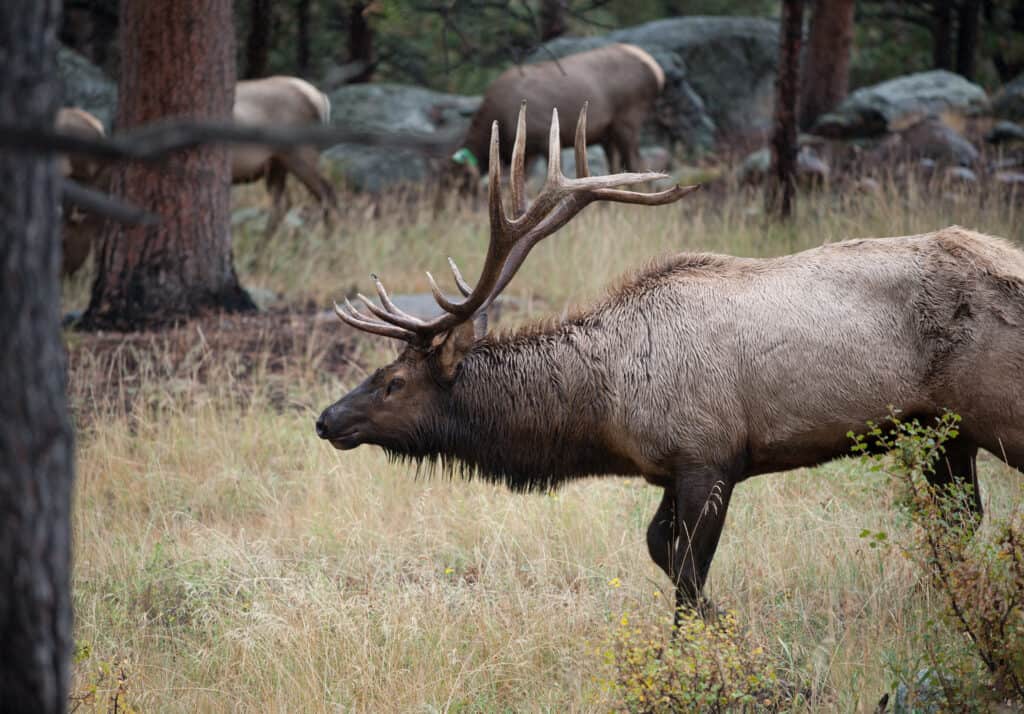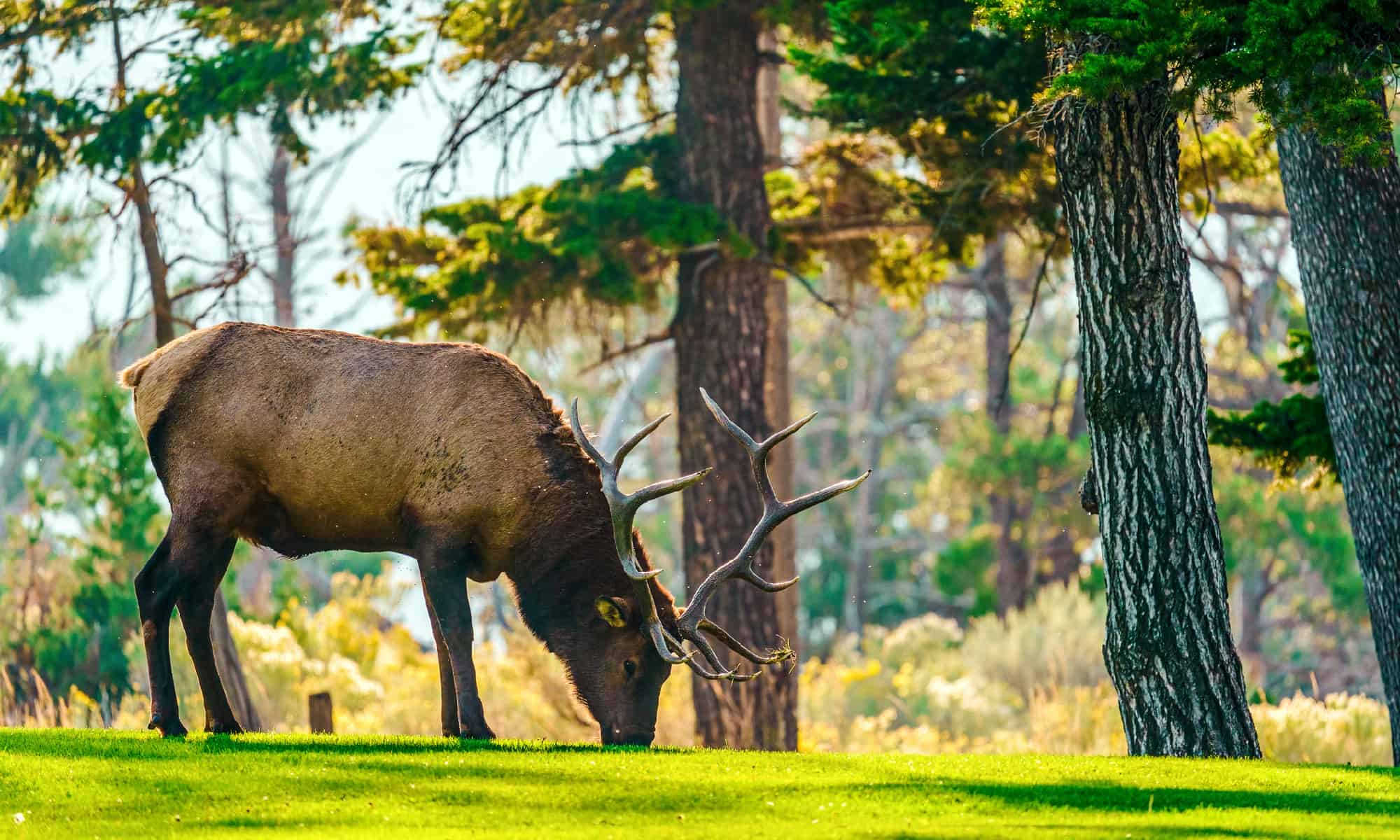Continue reading for our analysis...

The largest number of mammals in the lower 48 states may be found in Yellowstone National Park, which is a treasured destination for people seeking to experience the great outdoors. More than 200 different species of wildlife, including grizzly bears and bald eagles, can be found in Yellowstone. Nearly 60 different kinds of mammals wander their native habitat, including bison, wolves, bears, and elk.
A man named Tony Schoonen is the Chief of Staff at the Boone and Crocket Club. During a visit to this beloved national park, he spotted two animals going head-to-head. Thankfully for us, he captured it all on camera!
An alert elk can be seen standing in a rushing river as the footage begins. Little did it know, a gray wolf was nearby, ready to make a move. Elks spend a lot of time in water, whether it’s to relax, cool off, or hydrate their massive bodies.

The bull elk is a formidable foe for any attacking predators!
©Tony Campbell/Shutterstock.com
Size Comparison
Elk bulls, which are adult males, reach their greatest size at age 7. A male elk could weigh about 700 to 1100 pounds at maturity and stands an average of 5 feet tall at the shoulders. Cows, or female elk, weigh around 500 to 600 pounds and have an average height at the shoulder of 4.5 feet.
This doesn’t seem to be a fair match between the two animals. A wolf’s body is about three to five feet long, while its tail is typically one to two feet long. Males and females normally weigh 70 to 145 pounds and 60 to 100 pounds, respectively. With elks weighing so much more than wolves, one could assume they’d overpower wolves in a fight.

A gray wolf running in the snow. These gray animals are pack animals, organized into distinctive hierarchies within their wolf packs.
©Holly S Cannon/Shutterstock.com
In the footage uploaded by the Boone and Crocket Club Youtube channel, this grey wolf goes from being camouflaged in the brush near the river to attacking the elk. Hesitant to jump in the rushing river with the much larger animal, the wolf eventually takes a leap of faith.
It’s unclear why the elk didn’t leave during the several-minute struggle with the wolf in the water. The ferocious wolf jumps on the back of the elk as water splashes around them, leaving the nearby tourists feeling helpless.

These two wolves are likely part of a pack since wolves hunt together.
©iStock.com/Aunt_Spray
Wolves hunt by striding around, sniffing out prey, and then evaluating it for weaknesses. They are a long-legged predator capable of traveling hundreds of kilometers in a few days. Between 5% and 15% of the time they see an elk, they kill it.
As the fight continues, one commenter states, “The tenacity in survival! That water had to be unbearably frigid, yet both beasts endured it to try to stay alive.” Eventually, the elk is about chin-deep in the river as the wolf continues to pace the shoreline. We’re unsure of the final outcome, but are rooting for the poor elk.
Is This Normal Behavior?
Historically, the gray wolf has existed in many parts of the world. It once could be found over two-thirds of the United States. Now, populations of the gray wolf exist only in the Yellowstone Park in Wyoming (as in this video), and in parts of Alaska, Michigan, Wisconsin, Montana, Idaho, and Oregon.

The elk now live mostly in the western United States, many in national parks or refuge areas.
©iStock.com/FluidMediaFactory
Like the gray wolf, various types of elk once lived all across North America. Now they are mostly just in the western United States, although there are elk reserves elsewhere; e.g., Arkansas. The Wyoming National Elk Refuge and Yellowstone National Park have the largest populations of elk.
In the wild, the elk generally lives 10-13 years. Gray wolves live for about 14 years. While taking down a huge beast like an elk is not an everyday event for wolves, a hungry pack will take every opportunity to obtain food, especially when sustenance is hard to come by in the winter months.
Predators will tend to seek out small, weak, or elder members of their prey. Why make it any harder or dangerous than needed, right? It makes sense to find the easiest target and deliver dinner for the pack!
Thank you for reading! Have some feedback for us? Contact the AZ Animals editorial team.






